motor learning and recovery of function
1/55
There's no tags or description
Looks like no tags are added yet.
Name | Mastery | Learn | Test | Matching | Spaced |
|---|
No study sessions yet.
56 Terms
motor learning
acquisition and re-acquisition of movement
involves learning new motor & sens strategies
emerges from interaction of perception/cognition/action
recovery of function
new solutions in specific tasks & environment given new constraints on individual by neural pathology
performance
in the moment—temporary change in motor behavior seen during practice sessions
learning
acquisition or modification of movement
results from experience of practice
produces relatively permanent changes in behavior
tested outside context and/or timeframe of training
distinct and separate from practice
which part of the brain is involved in memory?
hippocampus—encoding
neocortex (anterior cingulate especially)—recall
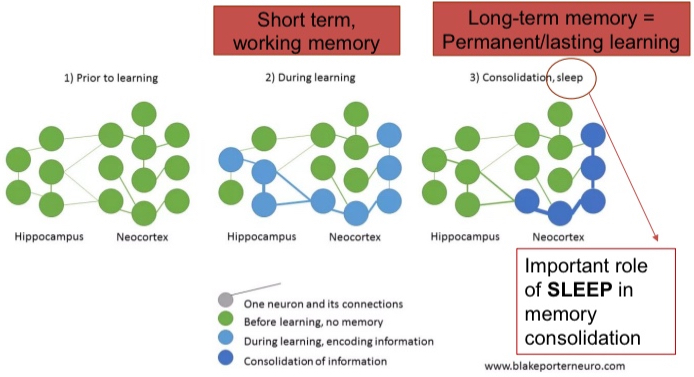
declarative/explicit memory
facts & events
nondeclarative/implicit memory
nonassociative learning: habituation and sensitization
associative learning: classical and operant conditioning
procedural learning: tasks and habits
declarative/explicit memory areas involved
medial temporal lobe
sensory association cortex
hippocampus
nonassociative learning areas involved
reflex pathways
associative learning areas involved
emotional responses: amygdala
skeletal musculature: cerebellum, deep cerebellar nuclei, premotor cortex
procedural learning areas involved
striatum and other motor areas (cerebellum, etc.)
explicit motor learning
verbal knowledge of movement performance=declarative memory
understanding how to do something
effortful processes bring about change in performance—paying attention to how a movement feels so you can modify next attempt, consciously discovering rules for movement
result: being able to say what you did or how to do something
implicit motor learning
no or minimal increase in verbal knowledge of movement (declarative memory) but improvement in movement performance (procedural memory)
being able to do something
no conscious attention to task—initially unaware, may stay unaware
unable to verbalize what was learned
“habit learning”
non-associative learning
nervous system learns response by repeated exposure to stimulus
habituation & sensitization
habituation
diminished responsiveness from repeated exposure to non-painful stimulus
ex. wearing clothes—there’s always sensory input, but you’re not always consciously processing the feeling of clothes on your body
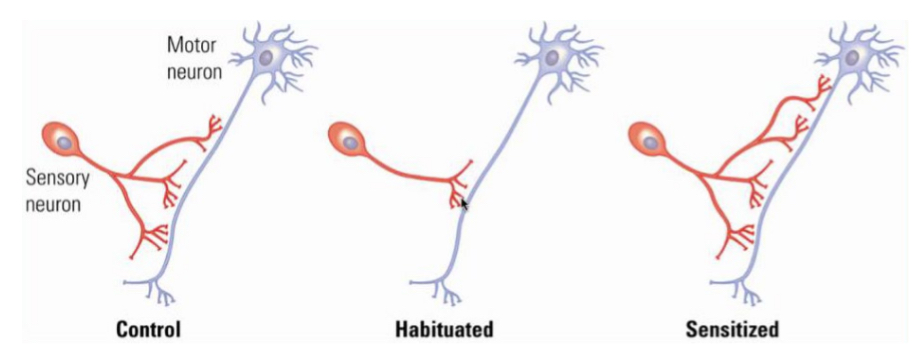
sensitization
amplified responsiveness following a threatening, painful, or noxious stimulus
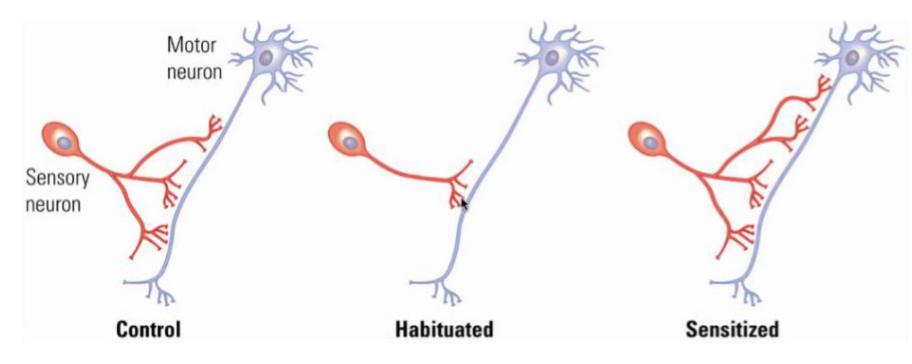
classical conditioning
training a response to occur following stimulus even though it was previously associated with another stimulus (Pavlov’s dogs)
operant conditioning
trial and error based
task we’re learning leads to + or - outcome, we learn with ± reinforcement/punishment
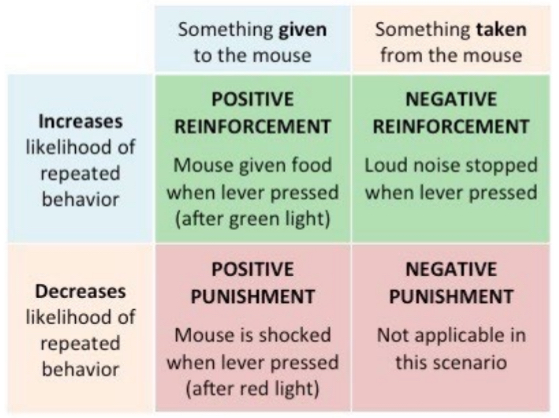
neural contributions to implicit/procedural learning & memory
no single area of brain
3 critical subcortical areas: cerebellum, BG, sensorimotor cortex (supplementary motor area!!!)
cerebellum
monitors and updates movement using sensory feedback
adjusts motor output to bilat cortex
uses sensory info to guide procedural learning
basal ganglia
coordinates neural processes across brain regions
involved in movement response selection (changing movement/direction)
ex. PD pts have trouble turning, crossing thresholds
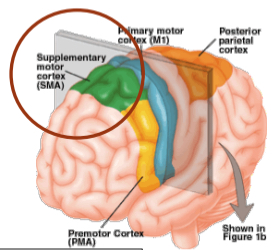
supplementary motor area
activates with initiation of movement and motor coordination
sensorimotor cortex
active when explicit knowledge unavailable, learning is implicit
more active after movements sequence becomes automatic
can be utilized to drive motor learning when explicit learning systems are damaged
neural contributions to explicit/declarative learning
hippocampus
medial temporal cortex
amygdala
prefrontal and premotor cortices
hippocampus & medial temporal cortex
critically support formation of declarative learning and memory
damage→decr ability to form declarative knowledge, retain ability for procedural learning
ex. amnesia, encephalitis, alzheimer’s
prefrontal cortex
allows declarative learning to be held in working memory, used to guide motor performance
damage→decr ability to integrate declarative knowledge into movement
premotor cortex
important in sequence & timing via external cues, explicit instructions
damage→decr ability to integrate declarative knowledge into movement
repetition can…
convert declarative skill into procedural (automatic)
declarative learning allows pts to do what?
practice even when physical conditions will not allow it (increased repetition) via mental rehearsal
declarative requires the pt to be…
highly motivated
able to attend fully to task
able to integrate new info to info they already know about the task
can be mediated by PT
what if explicit/declarative learning is compromised?
implicit/procedural learning can be maintained
ex. HD, alzheimer’s, MS, brain injury
delivery of declarative instructions disrupts procedural learning in post-stroke pts
things to think about with pts with impaired declarative learning
evaluate and consider impact of verbal instructions
are instructions enhancing or hurting motor learning?
fitts & posner stages of motor learning
cognitive phase
associative phase
autonomous phase
cognitive phase
understanding what to do
high attentional demands
declarative, high performance variability
associative phase
knowing how to do it
less attention required
mostly implicit, low performance variability
autonomous phase
doing it well
low attentional demands, easier to multitask
implicit
schmidt’s schema theory
creation of 2 schemas (motor & recognition sensory) leading to development of a motor program→apply to variety of contexts
motor program
set of general rules of spatial-temporal patterns for a type of movement
schema theory: 4 things available for storage in short term memory
initial movement conditions
parameters
outcome of movement
sensory consequences
schema theory: where does info go from short-term memory?
recall schema, recognition schema
learning consists of ongoing process of updating these schemas w/ each movement made
limitations of schema theory
strong support in children, less in adults (few adults would not have some exp of movement while children are naive to many)
lacks specificity; how does schema processing interact w/ other systems/interact for initial movement
schema theory clinical implications
vary environment in order to pull different motor programs and select which is most appropriate
ecological theory
perception & action systems mapped into optimal task performance through exploration of perceptual/motor workspace
suggests need to indentify critical perceptual variables
roles of perceptual info
prescriptive
feedback during & on completion of movement
can be sued to structure search for a perceptual/motor solution
ecological theory: how to facilitate learning
help learner understand nature of perceptual/motor workspace
help learner understand natural search strategies used
provide augmented info to facilitate search
ecological theory: transfer of motor skills
dependent on similarity of tasks, relatively independent of muscles used or objects manipulated
clinical implications of ecological theory
pts must learn perceptual cues that will help identify optimal strategy
pts must learn to discriminate btwn regulatory and non-regulatory cues
2 stage model
understand task dynamics: goal, movement strategies, environmental features
fixation/diversification: refine movement; consistency, efficiency, adaptability
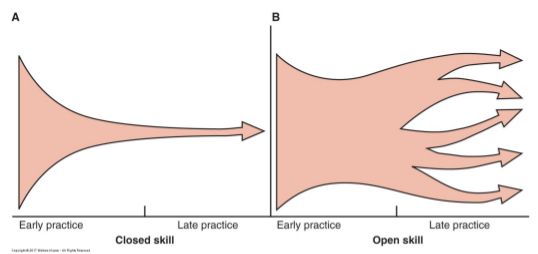
bernstein 3 stage theory
focuses on controlling degrees of freedom of body segment during movement
novice stage, advanced stage, expert stage
novice stage
learner simplifies movement by controlling DOF
constraint at cost of efficiency and flexibility of task
advanced stage
gradual release of DOF
reduced co-contraction and incr in use of synergies
expert stage
all necessary DOF released
use of passive forces to incr speed and reduce energy cost
most efficient & coordinated performance
testing performance
look at what happens during practice
testing learning
retention testing: period of no practice of specific task, then same task in same context
OR
transfer test
both indirect tests, distinguish learning from performance
transfer testing
different task in different context, but related to original task (ex. original task STS, different task standing up from floor)
stronger test of learning=addresses adaptability of skilled movement
concept of savings
=time saved when relearning a task vs. time needed w/ initial learning
ex. riding a bike takes a long time to learn at first, but each time you ride a bike you become familiar with how to do it after a few pedals